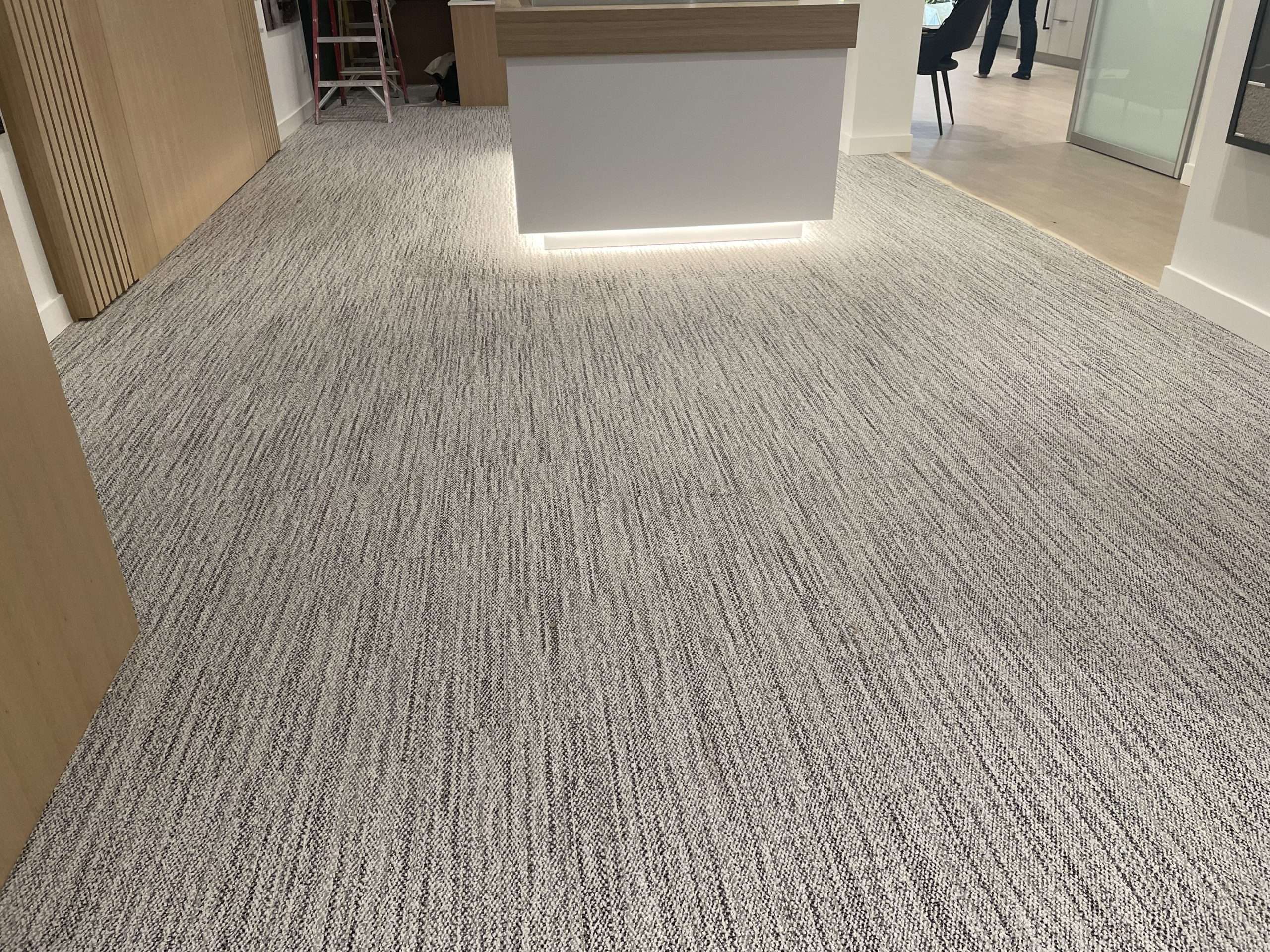The best type of flooring for office spaces will depend on a variety of factors, such as the budget, design preferences, and the amount of foot traffic the space will experience. Also, choosing the right flooring for an office is an important decision that can impact the look, feel, and functionality of the space. With so many options available, it can be difficult to know which one is best for your needs. In this article, we will explore some of the most popular office flooring options and their respective advantages and disadvantages.
-
Carpet
Carpet is a popular choice for office spaces because it provides a comfortable surface for walking and sitting. It can also reduce noise levels and create a warm and inviting atmosphere. Carpets are available in a wide range of colors and styles, making it easy to find one that matches the décor of your office.
One of the main disadvantages of carpet is that it can be difficult to clean and maintain. Over time, dirt and stains can accumulate, making the carpet look dirty and worn. This can be especially problematic in high-traffic areas where the carpet is more likely to get dirty.
-
Hardwood
Hardwood flooring provides a classic, professional look that is easy to clean and maintain. It is also durable and can last for decades, making it a cost-effective choice in the long run. Hardwood floors are available in a wide range of colors and finishes, from light to dark, which can be matched to the décor of the office.
One of the disadvantages of hardwood flooring is that it can be more expensive than other options. Additionally, it can be susceptible to scratches and dents, especially in high-traffic areas. It may also require refinishing periodically to maintain its appearance.
-
Vinyl
Vinyl flooring is a budget-friendly option that is available in a wide range of colors and styles, including designs that mimic natural materials like wood or stone. It is easy to clean and maintain, making it a good choice for high-traffic areas. Vinyl flooring is also durable and can withstand heavy foot traffic.
One of the disadvantages of vinyl flooring is that it can be prone to fading and discoloration over time, especially if it is exposed to direct sunlight. Additionally, it can be difficult to repair if it becomes damaged or torn.
-
Tile
Tile flooring is durable and easy to clean, making it a popular choice for high-traffic areas. It is available in a variety of colors and styles, and can provide a sleek, modern look. Tile flooring is also resistant to water and moisture, making it a good choice for areas that may be prone to spills or leaks.
One of the main disadvantages of tile flooring is that it can be cold and hard, which may not be comfortable for long periods of standing or walking. It can also be prone to cracking and chipping if heavy objects are dropped on it.
-
Concrete
Concrete flooring is becoming increasingly popular in office spaces due to its durability, low maintenance requirements, and modern, industrial look. It is available in a variety of colors and finishes, and can be polished to create a high-gloss, reflective surface.
One of the disadvantages of concrete flooring is that it can be hard and uncomfortable to stand on for long periods of time. It may also be prone to cracking and staining if not properly sealed and maintained.
Ultimately, the best flooring choice for an office space will depend on a variety of factors, including budget, design preferences, and maintenance requirements. Consulting with a flooring professional can help ensure that you make the best choice for your specific needs.



